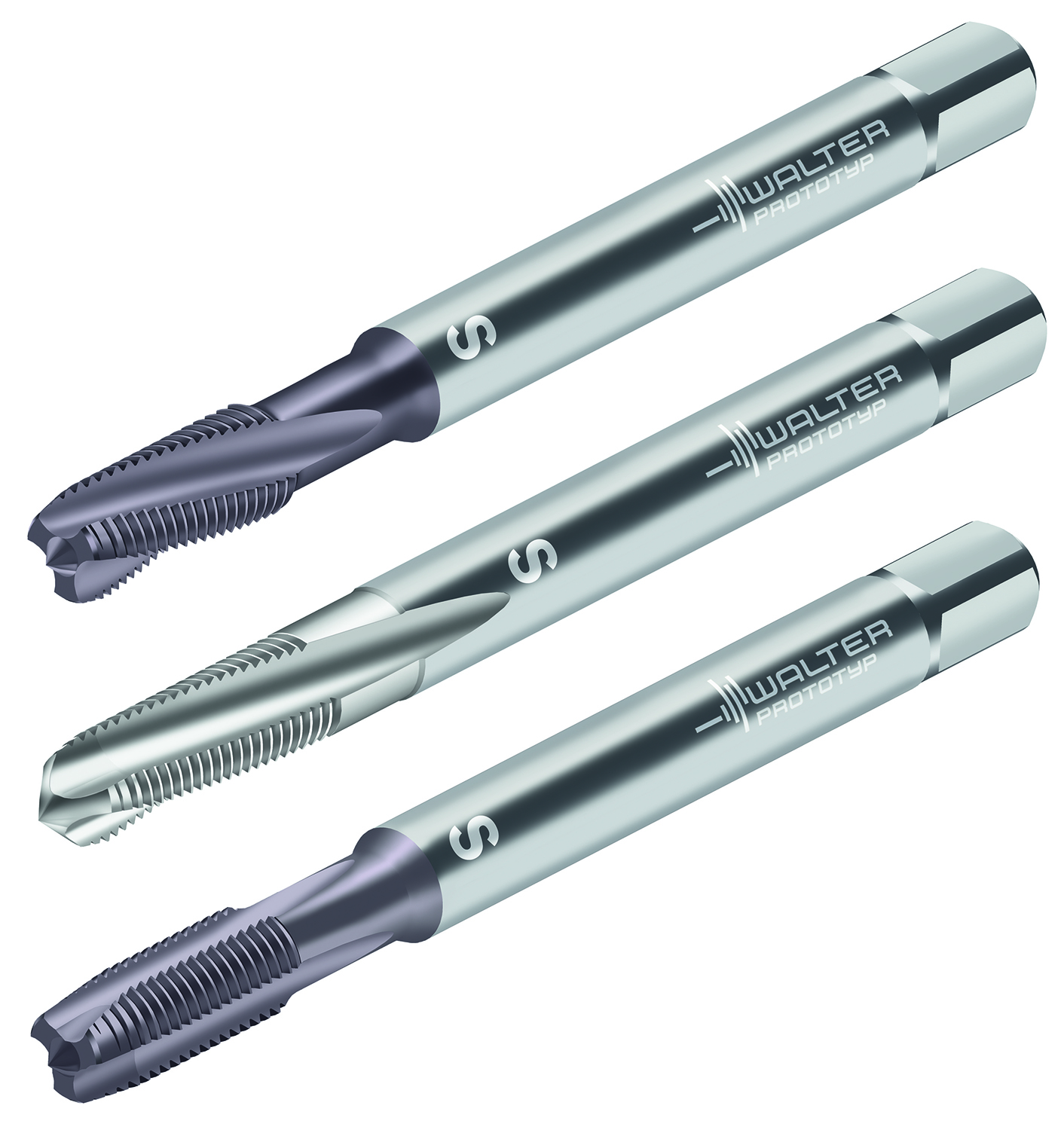Paradur Ti Plus and Prototex TiNi Plus Taps
Paradur Ti Plus and Prototex TiNi Plus Taps
The Paradur® Ti Plus taps are for threading blind holes with a geometry specially developed for machining titanium alloys with a tensile strength of at least 700 N/mm2 using emulsion instead of oil. The Prototex® TiNi Plus tap is effective for through-hole threading. Walter specially developed the geometry to thread titanium and nickel-based super alloys (ISO S material group) with a tensile strength of 700 N/mm2 or higher using emulsion.

Walter has expanded the range of its Paradur® Ti Plus and Paradur® Ni 10 and Prototex® TiNi Plus tap lines, specifically by increasing its existing portfolio for J profiles with extensive new dimensions. Screw threads with J profiles feature a root radius, which improves the tensile stress area of the fastener and helps reduce the stress concentration factor in the thread to make the thread stronger. The minor diameter of J-profile threads is curved to minimize stress points created by sharp edges or corners, which can break due to vibration. Threads with the J profile are particularly preferred in the aerospace industry for difficult-to-machine materials.
Paradur® Ti Plus and Prototex® TiNi Plus taps are now available to produce UNJC4 – UNJC3/8, UNJF6 - UNJF5/8 and MJ3 to MJ10 thread sizes, and the Paradur® Ni 10 taps are available to produce UNJC4 – UNJC3/8, UNJF6 – UNJF7/8 and MJ3 to MJ6 .
The Paradur® Ti Plus taps are for threading blind holes with a geometry specially developed for machining titanium alloys with a tensile strength of at least 700 N/mm2 using emulsion instead of oil. The tool has a wear-resistant, titanium-free ACN coating to prevent built-up edge, a 15° helix angle with chamfer form C, and an enlarged core diameter for a high level of stability and process reliability. The Paradur® Ti Plus tap performs up to 2×D in the standard range. Potential benefits include a high level of process reliability because of elevated tool stability, long tool life because of the hard coating and stable cutting edges that prevent fractures.
The Paradur® Ni 10 taps are also for threading blind holes. Walter specially developed the geometry for tapping nickel-based super alloys, such as Inconel 718, with a tensile strength up to 1,450 N/mm2. The uncoated tool is also cost-effective when tapping stainless steel with difficult cutting properties and steel with a tensile strength from 1,200 to 1,600 N/mm2. The cutting edges are stable due to the reduced 10° helix angle in the chamfer section. The usable length is up to 1.5×D in the standard range.
The Prototex® TiNi Plus tap is effective for through-hole threading. Walter specially developed the geometry to thread titanium and nickel-based super alloys (ISO S material group) with a tensile strength of 700 N/mm2 or higher using emulsion. It provides effective depths to 2×D in the standard range. In addition to aerospace components, the Prototex® TiNi Plus tap excels threading components for the medical device industry





